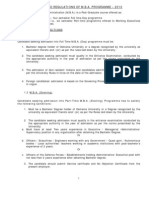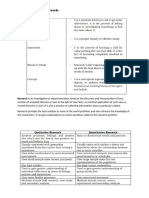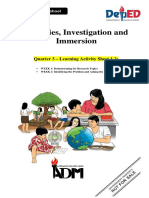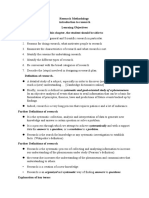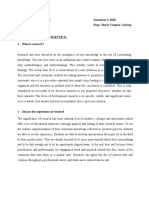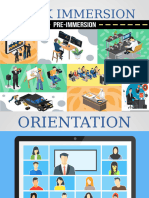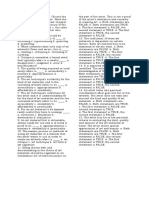0 ratings0% found this document useful (0 votes)
8 viewsNatural Inquiry
Natural Inquiry
Uploaded by
Julie Ann MalonzoCopyright:
© All Rights Reserved
Available Formats
Download as PDF, TXT or read online from Scribd
Natural Inquiry
Natural Inquiry
Uploaded by
Julie Ann Malonzo0 ratings0% found this document useful (0 votes)
8 views29 pagesOriginal Title
Natural-Inquiry
Copyright
© © All Rights Reserved
Available Formats
PDF, TXT or read online from Scribd
Share this document
Did you find this document useful?
Is this content inappropriate?
Copyright:
© All Rights Reserved
Available Formats
Download as PDF, TXT or read online from Scribd
Download as pdf or txt
0 ratings0% found this document useful (0 votes)
8 views29 pagesNatural Inquiry
Natural Inquiry
Uploaded by
Julie Ann MalonzoCopyright:
© All Rights Reserved
Available Formats
Download as PDF, TXT or read online from Scribd
Download as pdf or txt
You are on page 1of 29
ST. VINCENT’S ACADEMY OF APALIT, PAMPANGA INC.
1595 Gonzales Ave., San Vicente, Apalit, Pampanga
INQUIRY, INVESTIGATION, AND IMMERSION
Lesson 1 : Natural Inquiry
Prepared by: Jerus C. Tolentino, LPT
What is RESEARCH?
Is an investigation or experimentation aimed at the
discovery and interpretation of facts, revision of
accepted theories or laws in the light of new facts, or
practical application of such new or revised theories or
laws.
What is RESEARCH?
It is also a practice of collecting information about
a particular subject.
Research provides the best solution to some of the world
problems and also enhance the knowledge of the
researchers.
It can give explanations to certain questions
stated in the research problem. Through the
explanations, it serves as a tool for building
knowledge and for facilitating new learning.
What is RESEARCH?
Introduces new ideas, helps the researchers identify
problems and appropriate solutions in new ways and
provide new framework to guide thinking and action.
It informs action, proves a theory and contributes to
develop knowledge in a field or study. Therefore, it
understands various issues and increases public
awareness.
The following shall help you recall some significant
details relevant to your previous understanding about
the types of research namely: qualitative and
quantitative researches.
QUALITATIVE RESEARCH
Involves processes, feelings, and motives (the why’s
and the how’s) and produce indepth and holistic
data.
Usually concerned with generating hypothesis from
data rather than testing a hypothesis.
QUALITATIVE RESEARCH
Uses either unstructured or semi-structured
instruments.
Uses small sample sizes chosen purposely.
Has high validity
QUALITATIVE RESEARCH
Used to gain greater understanding of individual
differences in terms of feelings, motives and
experiences.
Uses more flexible processes
Methods include field research, case study and
secondary analysis.
QUANTITATIVE RESEARCH
Aims to characterize trends and patterns
Usually starts with neither a theory nor hypothesis
about the relationship between two or more
variables.
Uses structured research instruments like
questionnaires or schedules
QUANTITATIVE RESEARCH
Aims to characterize trends and patterns.
Uses large sample sizes that are representatives of
the population.
Has high output replicability.
Used to gain greater understanding of group
similarities.
QUANTITATIVE RESEARCH
Uses structured processes.
Methods include census, survey, experiments and
secondary analysis.
INQUIRY
Is a method that has the aim of extending
knowledge, undertaking doubt, or solving a
problem. A theory of inquiry is an interpretation of
the various types of inquiry and action of the ways
that each type of inquiry attains its aim.
Now, to give you an idea of how to prepare for research, you may
do the inquirybased learning using the following steps mentioned
below:
Focus. An ill-structured problem demands consideration of diverse
perspectives.
Decide on a topic. Think-aloud, asks probing questions, monitors and
encourages participants to decide a topic.
Understanding the problem. This will include clarifications of
misconceptions and possibilities.
Design on the problem. This is the final stage done to address
problems
within manageable scales and extend their learning pathways.
Brainstorming
Is a way of inquiring ideas that will help you to
develop concepts and focusing techniques by asking
questions and knowing the interests of the persons
involved in the said issues. The potential ideas can
be visualized for interpretations.
Now, to give you an idea of how to prepare for research, you may
do the inquirybased learning using the following steps mentioned
below:
1. A problem that is most interesting to you.
2. Existing problems in the class/school/campus.
which one may want to solve.
3. Existing needs of the community or society.
4. Area of interest, specialization or event from
related fields.
5. Prevailing theories and philosophy.
Criteria in Choosing a Research Topic:
1. It should be something new or different from what
has already been written about.
2. It must be original.
3. It should be significant to the field of study or
discipline.
4. It must necessarily arouse intellectual curiosity.
5. It should be of researcher’s interest.
Criteria in Choosing a Research Topic:
6. It should be a modest one for a beginner to be
carried out within a limited period of time.
7. It should be clear, not ambiguous.
8. It should be specific, not general.
9. It should consider the training and personal
qualifications of the researcher.
10. It should consider the availability of data involved
in the study and the methods and techniques to be
employed in gathering them.
Criteria in Choosing a Research Topic:
11. It should consider the availability of effective
instruments for gathering the data and their
treatment.
12. It should consider the financial capacity of the
researcher to support the project.
13. It should consider the time factor involved in the
undertaking
Here are some examples of possible basis of issues applicable for
senior high school learners. These are useful in crafting a research
agenda that will lead in the writing of the title and research
problem.
Observe the given example as a guide about the
mentioned concerns in your research agenda.
Thank you
for
listening!
ACTIVITY #1
You might also like
- Research Methods: Simple, Short, And Straightforward Way Of Learning Methods Of ResearchFrom EverandResearch Methods: Simple, Short, And Straightforward Way Of Learning Methods Of ResearchRating: 4 out of 5 stars4/5 (13)
- RESEARCH METHODS 2013 NotesDocument28 pagesRESEARCH METHODS 2013 NotesTawanda Tatenda HerbertNo ratings yet
- MBA OU Syllabus 2010Document60 pagesMBA OU Syllabus 2010shahissh100% (1)
- Inquiries, Investigation and ImmersionDocument11 pagesInquiries, Investigation and ImmersionKeanna DelsNo ratings yet
- Reviewer I3Document6 pagesReviewer I3jiren sanNo ratings yet
- 3is Lecture 19layout Nyo Ayon Sa Inyong KagustuhanDocument4 pages3is Lecture 19layout Nyo Ayon Sa Inyong KagustuhanLorraine VillanuevaNo ratings yet
- PP T LectureDocument54 pagesPP T LecturemissNo ratings yet
- Chapter 1Document8 pagesChapter 1reyaabrjNo ratings yet
- What Is ResearchDocument12 pagesWhat Is ResearchSarada SanNo ratings yet
- Research 1Document28 pagesResearch 1dreadburganNo ratings yet
- Topic1 Nature Inquiry of RsDocument25 pagesTopic1 Nature Inquiry of RsJenevieve AdvinculaNo ratings yet
- Research Methodology FinalDocument70 pagesResearch Methodology Finalvepowo Landry100% (2)
- Inquiries, Investigation and Immersion: Mr. Edward Joseph G. Tallud, LPTDocument15 pagesInquiries, Investigation and Immersion: Mr. Edward Joseph G. Tallud, LPTCy DenverNo ratings yet
- III Reviwer q3Document17 pagesIII Reviwer q3MaeNo ratings yet
- Module 1 Brainstorming For Research TopicsDocument17 pagesModule 1 Brainstorming For Research TopicsSteven GuireraNo ratings yet
- Classification of ResearchDocument59 pagesClassification of ResearchJade HuescaNo ratings yet
- LAS III 12 MELC 1 Week 1-2-2Document18 pagesLAS III 12 MELC 1 Week 1-2-2kurtwilliamtNo ratings yet
- PR1 Exam Reviewer 1Document9 pagesPR1 Exam Reviewer 1Marian AnormaNo ratings yet
- 3is Lesson 1Document15 pages3is Lesson 1Lance Reylean AltasNo ratings yet
- Methods of Research Week 3 AssessmentDocument5 pagesMethods of Research Week 3 AssessmentJoeddy LagahitNo ratings yet
- Introduction To Research-2023Document44 pagesIntroduction To Research-2023Banolka Nob100% (2)
- NotesDocument7 pagesNoteskinza hameedNo ratings yet
- ResearchDocument3 pagesResearchDaleep KumarNo ratings yet
- Research Methods Lecture 1Document89 pagesResearch Methods Lecture 1eylulaltay4No ratings yet
- What Is The Nature of ResearchDocument7 pagesWhat Is The Nature of ResearchHanny ValenciaNo ratings yet
- 1brainstorming For Research TopicsDocument2 pages1brainstorming For Research TopicsAquisha MicuboNo ratings yet
- RESEARCH METHODS IN BUSINESS Mod.Document111 pagesRESEARCH METHODS IN BUSINESS Mod.Rachel Haile100% (1)
- Nature and Characteristics of ResearchDocument18 pagesNature and Characteristics of ResearchRaj0% (1)
- Agri 227-Methods of Agricultural ResearchDocument55 pagesAgri 227-Methods of Agricultural ResearchERLINDA PALACIO100% (1)
- 3is LAS Week 1-2 Q3Document10 pages3is LAS Week 1-2 Q3Angelie ButalidNo ratings yet
- Chapter OneDocument31 pagesChapter OneALemuNo ratings yet
- Unit - 1 Research, Research Process, Ethics in ResearchDocument7 pagesUnit - 1 Research, Research Process, Ethics in ResearchBharadwaj VedulaNo ratings yet
- LESSON 1 Quantitative Research Characteristics and ImportanceDocument23 pagesLESSON 1 Quantitative Research Characteristics and ImportanceRj Ricenn Jeric MarticioNo ratings yet
- Pracrea1 Chapter 1Document36 pagesPracrea1 Chapter 1Abegail AcohonNo ratings yet
- PR1 All in HandoutDocument28 pagesPR1 All in HandoutJahsjshdjsjckdnekfjdbhsiskNo ratings yet
- Research ManualDocument57 pagesResearch ManualOliver ToquiroNo ratings yet
- Research Methodology Introduction To Research Learning Objectives After Completing This Chapter, The Student Should Be Able ToDocument7 pagesResearch Methodology Introduction To Research Learning Objectives After Completing This Chapter, The Student Should Be Able ToEbong MichaelNo ratings yet
- Summary Edu-Research 110259Document9 pagesSummary Edu-Research 110259HeyFilesNo ratings yet
- Research: Luzviminda T. Orilla, PH.DDocument24 pagesResearch: Luzviminda T. Orilla, PH.DJayson Gerona100% (1)
- Research Method in Agricultural EconomicsDocument245 pagesResearch Method in Agricultural Economicslemmademe204No ratings yet
- Research AssigmentDocument3 pagesResearch AssigmentMobile LegendsNo ratings yet
- TORRES, Yhancie Mae R. December 5, 2020 2016141977/A5 Engr. Maria Virginia CabalagDocument11 pagesTORRES, Yhancie Mae R. December 5, 2020 2016141977/A5 Engr. Maria Virginia CabalagYhancie Mae TorresNo ratings yet
- Social Research and Social Work Research: Unit 1Document32 pagesSocial Research and Social Work Research: Unit 1Prudhvi KNo ratings yet
- Business Research ManagementDocument15 pagesBusiness Research ManagementRohit DhangarNo ratings yet
- Research Proposal L U 1Document27 pagesResearch Proposal L U 1bienvenufabrice2001No ratings yet
- Fiat Lux Academe: CaviteDocument4 pagesFiat Lux Academe: CaviteMa. Jhysavil Arcena100% (1)
- Research Method in Animal ScienceDocument62 pagesResearch Method in Animal ScienceNigussu FekadeNo ratings yet
- Compilation of All ReportsDocument56 pagesCompilation of All ReportsJoseph Vincent A SalvadorNo ratings yet
- Explanatory Research DefinitionDocument4 pagesExplanatory Research DefinitionD'Paola TorresNo ratings yet
- Inquiries Investigation and Immersion Module 1 1Document16 pagesInquiries Investigation and Immersion Module 1 1dulaayessa0No ratings yet
- Lecture Notes On Ges 571 August 20224Document26 pagesLecture Notes On Ges 571 August 20224adeleketimilehineuniceNo ratings yet
- SENIOR HIGH SCHOOL-Inquiries, Investigation and Immersion: I. Learning SkillsDocument13 pagesSENIOR HIGH SCHOOL-Inquiries, Investigation and Immersion: I. Learning Skillsapril biguejaNo ratings yet
- Research Methodology PhilosophyDocument160 pagesResearch Methodology Philosophymarta soaneNo ratings yet
- Research UNIT 1 and 2Document17 pagesResearch UNIT 1 and 2seyoum shimelsNo ratings yet
- Reserch MethodologyDocument45 pagesReserch Methodologysaraths4510No ratings yet
- Research Vs InquiryDocument4 pagesResearch Vs InquiryDyane Boncodin100% (1)
- Research MethodologyDocument82 pagesResearch MethodologyRajiv RanjanNo ratings yet
- 3 IsDocument39 pages3 IscaboboyjacintoNo ratings yet
- Educational ResearchDocument100 pagesEducational ResearchabotsiphilipneriNo ratings yet
- 2 Nature of Inquiry and ResearchDocument21 pages2 Nature of Inquiry and ResearchRye Lita AbardoNo ratings yet
- Advanced Calculations and Computations in MS ExcelDocument17 pagesAdvanced Calculations and Computations in MS ExcelJulie Ann MalonzoNo ratings yet
- Work ImmersionDocument37 pagesWork ImmersionJulie Ann MalonzoNo ratings yet
- Spoken Word PoetryDocument21 pagesSpoken Word PoetryJulie Ann MalonzoNo ratings yet
- Texts and ContextDocument11 pagesTexts and ContextJulie Ann MalonzoNo ratings yet
- Malpractice Rules - Disciplinary Action For Improper Conduct in ExaminationsDocument5 pagesMalpractice Rules - Disciplinary Action For Improper Conduct in ExaminationsBhageerathNo ratings yet
- Astm A 388 PDFDocument9 pagesAstm A 388 PDFVarun DevNo ratings yet
- Syllabus CGSC 433 - Acoustic Phonetics - Spring 2012: Course InformationDocument4 pagesSyllabus CGSC 433 - Acoustic Phonetics - Spring 2012: Course InformationAnonymous bZTdTpLNo ratings yet
- Banking and Financial InstitutionsDocument6 pagesBanking and Financial InstitutionsCristell BiñasNo ratings yet
- Intro-to-Partnership-Corporation AccountingDocument11 pagesIntro-to-Partnership-Corporation AccountingknockdwnNo ratings yet
- Study On CheatingDocument38 pagesStudy On CheatingVeronciaNo ratings yet
- A. Rights and Dignity of ParticipantsDocument4 pagesA. Rights and Dignity of ParticipantsJoshua NolascoNo ratings yet
- Philippine Psychometricians Licensure Exam RevieweDocument1 pagePhilippine Psychometricians Licensure Exam RevieweKristelle Mae C. Azucenas0% (1)
- Resources For Teachers TKT ClilDocument4 pagesResources For Teachers TKT ClilRachel Maria RibeiroNo ratings yet
- University of The West Indies Mktg3001 2018Document3 pagesUniversity of The West Indies Mktg3001 2018jacobNo ratings yet
- आईआरईएल (इंडिया) लललिटेि IREL (India) Limited: (Formerly Indian Rare Earths Limited)Document8 pagesआईआरईएल (इंडिया) लललिटेि IREL (India) Limited: (Formerly Indian Rare Earths Limited)Jahnavi ChinnuNo ratings yet
- QuestionsDocument3 pagesQuestionsCaius Ovidiu MerșaNo ratings yet
- English For Specific Purposes2Document20 pagesEnglish For Specific Purposes2edelmar benosaNo ratings yet
- U3l3 Quiz 1Document2 pagesU3l3 Quiz 1api-31338718167% (3)
- Global Placement Application FormDocument2 pagesGlobal Placement Application FormAnonymous a8rdyKOC100% (1)
- Using Information in HR NABDocument2 pagesUsing Information in HR NABEliza Alexe0% (4)
- 10 Tips For HLEDocument1 page10 Tips For HLEfarida SaaniNo ratings yet
- CPARDocument3 pagesCPARJulianna Tamayo - AcedoNo ratings yet
- First Quarter Examination in Eapp (Answer Sheet)Document2 pagesFirst Quarter Examination in Eapp (Answer Sheet)isabel bardinasNo ratings yet
- Key 1Document1 pageKey 1swezin win0% (1)
- CPM Study Guide(完全版M1,M2,M3,M4模块,适合CPM及CPSM学习使用)Document507 pagesCPM Study Guide(完全版M1,M2,M3,M4模块,适合CPM及CPSM学习使用)Louie_19790% (1)
- Bbau - Admit CardDocument2 pagesBbau - Admit CardMahefuj husen khanNo ratings yet
- Batangas: University ofDocument2 pagesBatangas: University ofCamille ComiaNo ratings yet
- Syllabus Sec1Document3 pagesSyllabus Sec1api-291112446No ratings yet
- 4024 w13 Ms 12Document6 pages4024 w13 Ms 12Safa IshratNo ratings yet
- Administrative Order No. 274 S. 1976Document6 pagesAdministrative Order No. 274 S. 1976Cherrylou BudayNo ratings yet
- Research Simulacrum PDF 1Document28 pagesResearch Simulacrum PDF 1Cristela Padero ValdezNo ratings yet
- PHD Ord 2022Document9 pagesPHD Ord 2022mahfoozmahmoodkhan1No ratings yet
- Level of RigorDocument6 pagesLevel of RigorHarvagale BlakeNo ratings yet


